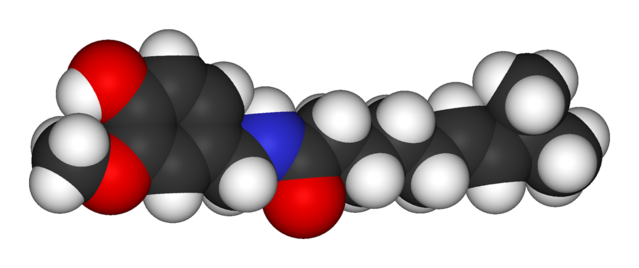Alcoholism
Why Does Drinking Milk Ease the Pain of Eating Spicy Food?
And no, almond milk won't do the job.
Posted February 16, 2017 Reviewed by Abigail Fagan

I'm pretty wimpy when it comes to eating spicy foods. But if I must indulge in some peppery Chinese food or a plate of hot wings, you'll surely see a glass of milk close to my reach.
Chili peppers contain an active component called capsaicin, which is part of the vanillioid family (the same family that includes the vanilla bean). Capsaicin binds to a receptor called the vanilloid receptor subtype 1 (TRPV1).
While TRPV1 receptors are found in several different organs throughout the body, activation of the TRPV1 receptor on the tongue produces the sensation of heat or abrasion, causing that characteristic burning sensation. Eating a chili pepper does not actually cause a chemical burn — but it certainly feels like it.
So why does milk soothe the savage serrano?
The chemical structure of capsaicin (below) reveals a long hydrocarbon tail, shown in black (carbon) and white (hydrogen):

That hydrocarbon tail means that oily or soapy compounds can act as a detergent to dissolve capsaicin, but water cannot. It's similar to how you can't clean grease off of a cooking pan simply with water, but dish soap will get the job done.

Milk from mammals contains a protein called casein (the same protein that creates curds in sour milk). Casein is a lipophilic (literally, "fat-loving") protein, which means that it acts as a detergent on capsaicin, thanks to that fatty hydrocarbon tail.
Alcohol also dissolves capsaicin well (wings and beer, anyone?), although its concentration in most alcoholic beverages is often too low to have much of an effect. (On the other hand, casein represents roughly 80 percent of the protein in cow's milk.)
But remember: It must be mammal's milk! Plant-based milks — such as soy, rice, coconut, or almond — do not contain casein.
Fun fact: Interestingly, in birds, the TRPV1 receptor does not respond to capsaicin, which means that the seeds of chili pepper plants can be dispersed widely. Biologists believe that some species of peppers, such as ghost peppers, have evolved to contain such high levels of capsaicin in order to deter animals from eating them — unless they are also able to help disperse the seeds!


